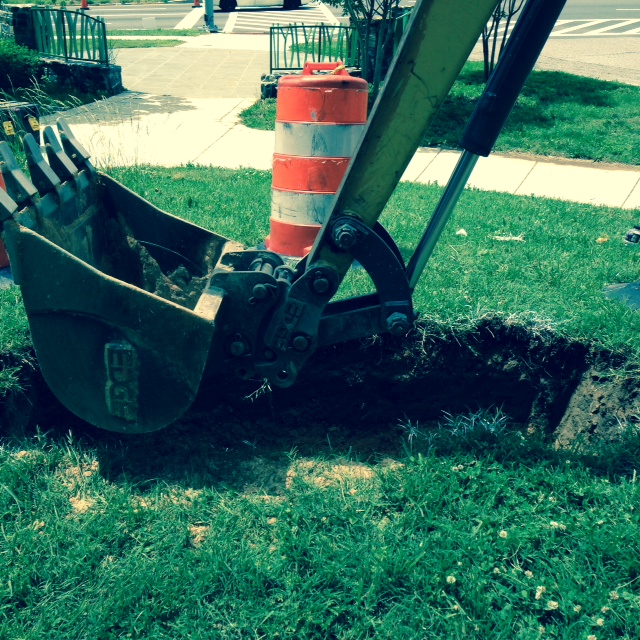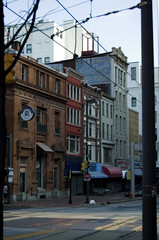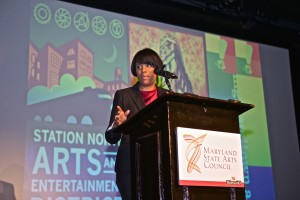
Last month, BOPA teamed up with the Baltimore Office of Sustainability to bring together farmers, artists, and community residents for a charette designed to help us shape our latest public art initiative. Together, we’re developing an unprecedented program that will provide microgrants for temporary public art works on and around hoop houses sited on city-owned vacant property.
Overall, we’re excited about the positive response we got and are grateful for the enthusiastic participants who contributed to our charette. We’re taking all the feedback we received and using it to generate an RFP (Request for Proposals) which we will release later this year.
Here’s a quick recap of the charette in case you missed it:
We started off with a tour of Gather Baltimore‘s hoop house in Oliver. Growing Green Coordinator, Jenny Guillaume, led the group into the plastic tunnel Gather’s farmers use to extend their growing season. It was warm inside despite the freezing temperatures outside the hoop house doors.

Like most hoop houses, Gather’s is made of polythylene film and bent steel sturdy enough for one of the farmers in attendance to show off his pull ups. The sidewalls are removable and the poly can be rolled up to lower the inside temperature and improve airflow during the hot summer months. In addition to wall modifications, shadecloths can also be draped over the structure to lower temperatures, and “cooling paint” can be applied directly to the poly. This particular hoop house was fully sprinklered and, though it had a streetlight nearby, it had no electricity.

After our quick tour, we went back inside for a group discussion, which we broke up into two sections – “Hoop Dreams” and “Hoop Realities”.
HOOP DREAMS –
We asked: What do you want to see?
- Solar-powered lighting, ambient lighting, and in-frame lighting
- Seasonal decorations / installations
- Community involvement!
- Painted-screen style shadecloths
- Frame painting
- Colored poly
- Artistic water gathering/recycling features
- Other functional artistic features such as: bird houses, trellis, materials that encourage habitats for bees
- Designed space for farmers to interface with residents
- Designed space for farmers to process
- Activating the hoop house during the off season (December-February)
HOOP REALITIES –
We asked: What kind of design constraints do you foresee?
- Hoop houses are largely unmonitored when they aren’t being worked in so any equipment (eg. expensive lights or projectors) would not necessarily be secured
- Some community residents don’t find hoop houses attractive, especially in the winter months, and would prefer that they be set back in lots rather than on main thoroughfares
- March-November are the busy farming months. December-February are dormant.
- Planting beds should not be tread on
- Hoop houses rarely have power sources
- Water control is often needed to prevent flooding
- Communities want the food grown inside local hoophouses to be made available to the community

After our discussion, we broke out into groups. Equipped with colored pencils, we all began to draw out our concepts. Some hoop houses turned into caterpillars. Some turned into castles and living rooms. Others still were retrofitted with wire sculptures, puppets, and sculptural vegetation on designed trellis.

I think it’s safe to say that the possibilities are pretty much endless when it comes to what you can do to infuse artwork into local hoop houses. Stay tuned for the release of our micro-granting program later this spring!






